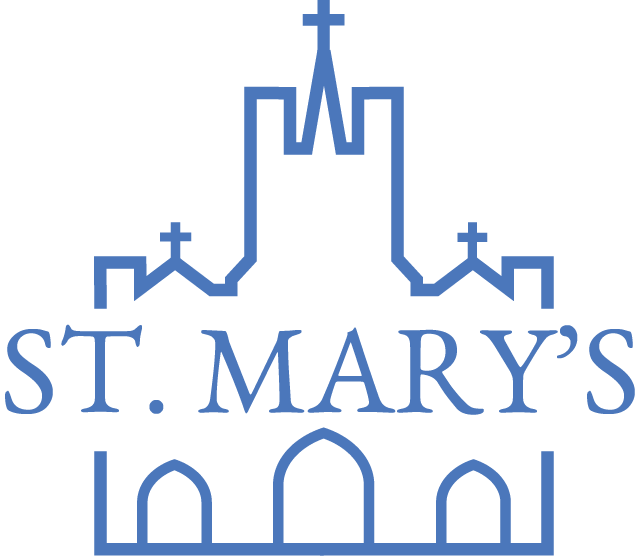04 Apr Easter Sunday
Homily by Archbishop Brendan M. O’Brien
Easter Sunday 2018
St. Mary’s Cathedral
St. Paul, in the Letter to the Romans, puts everything on the line when he says, “If Christ has not been raised, your faith is in vain.” With these words, he tells us that Christ’s resurrection, which we celebrate today, is not just some event in Christ’s life; it is the event in his life, and, for that matter, in the life of anyone who believes in him. Of course, the reason that it is so significant for us is that, to believe that Christ rose from the dead is to accept that this world as we know it, this environment that surrounds us, is not the final framework of our lives. We know that, in this world, death is a fact; we see it everywhere. Nothing lasts; everything dies and stays dead. The resurrection of Christ challenges this assumption.
The resurrection of Christ was not just a return to life. It was not the resuscitation of a corpse, as when Jesus brought Lazarus – and the daughter of Jairus – and the son of the widow of Naim – back to life. The resurrection is of a different magnitude. It implies that God is up to something greater than we can imagine. Jesus takes on a glorified existence; he has a body, but he is not subject to the normal constraints of our life. He has passed through death to a new way of life. As St. Paul says, the resurrection means that death is not the final word: “Death, where is thy sting?” (1Cor.15:55) The resurrection of Christ means that this world, the one we live in, is destined to be transformed into something greater: “new heavens and a new earth”. (2Pt.3:13)
In the second reading today from Colossians, Paul sees the Christian person as one who has undergone a dying and rising in his or her own life, patterned on Christ’s death and rising. And this, indeed, is what happens in baptism when “we die to sin and rise to new life”. But, as the reading and our own experience suggest, there is still a struggle. We can easily forget our true destination as a Christian and live as if ‘this life is all there is and so we had better get our chunk of it’.
The gospel which we have just heard proclaimed tells the story of the coming to faith of three of Jesus’s followers: Peter, another disciple, referred to as the disciple whom Jesus loved, and, finally, Mary Magdalene. We see in the account how Mary Magdalene comes to the tomb while it is still dark on the first day of the week. It doesn’t say why she came, but any thought of Jesus’s resurrection seems far from her mind. When she sees the stone rolled back from the entrance to the tomb, she jumps to the conclusion that Jesus’s enemies have stolen the body. This is the news that she brings to Peter and the other disciple. When they come to the tomb, they see the linen wrappings, and the account says that the beloved disciple believed; however, it says nothing of Peter’s reaction. Mary Magdalene remains after they depart, and, even when she encounters two angels, she still is mourning the fact that “they have taken away my Lord, and I do not know where they have laid him.” It is only when she encounters Jesus in his Risen Body that she recognizes him when he calls her by name.
The Risen Lord then speaks to her of how he is ascending to “my Father”, and then he adds, “and your Father”. With these words, he indicates the world to which he belongs and to which she belongs by her faith. In the person of Mary Magdalene, we see a real movement in her grasp of what has happened. She goes from being the one who went to tell the disciples that “they have taken the Lord from the tomb”, to one who, at the end of the account, is able to proclaim to them, “I have seen the Lord”. While the beloved disciple is portrayed as the first to believe, Mary Magdalene is the first to proclaim the Risen Lord. (Apostola apostolorum).
Fr. Raymond Brown, a renowned Scriptural scholar commenting on this passage, says: “The total scenario reminds us that, in the range of belief, there were different degrees of readiness and different factors that caused people to come to faith.” (Risen Christ Eastertime, p. 65). We will see more of this in the Easter season as we recount the different appearances of the Risen Lord to his disciples, and their reaction. Only gradually would Jesus’s disciples be able to take in belief in the resurrection; slowly would they understand its meaning and what they were being asked to do as a result. And as we are told in the first reading from the Acts of the Apostles, Peter takes up the challenge of witnessing to the Good News.
Today, many centuries later, as we reflect on what the scriptures have passed down to us, we are confronted by the message that, by his death, Christ has liberated us from sin, and, by his resurrection, has opened for us a new way of life that reinstates us in God’s grace so that we may share in the life of his only Son and be destined for Risen Life ourselves. It is not entirely surprising that, like the early followers of Jesus, this news is too much for us. The celebration of Easter gives us the opportunity once again to reflect on this central belief and hope of our Christian faith.
To sum up what I wanted to convey today, Easter is not only concerned with recalling the resurrection of Jesus or its impact on the lives of the first disciples. It is also about the meaning of this event for our own lives. As Jesus’s disciples changed, so, too, we need to be changing. The sign that we are sharing in the risen life of Jesus is when our lives and actions undergo constant development.
Each year, on Easter Sunday, after we have prepared for this feast through the observance of Lent, we are invited to renew our baptismal promises, which commit us to die to sin and to live for God in Jesus Christ. Each year, hopefully, we come to see more clearly what this involves and commit ourselves to struggle against our own selfishness, and the other obstacles that prevent our wholehearted witness to Christ, and work on behalf of those who suffer from poverty, injustice, and so many other conditions that limit people’s lives.
On behalf of all who serve you here at the Cathedral – the Rector, Father Shawn Hughes; Deacon Blaine Barclay, and in my own name, I wish you a Joyous and Blessed Easter.

